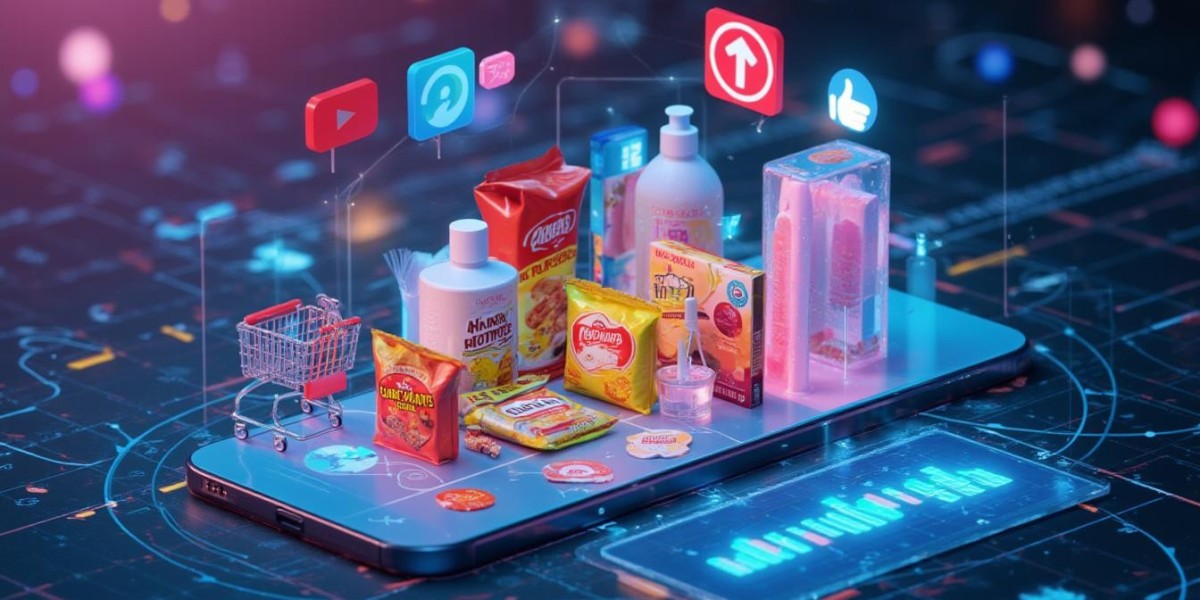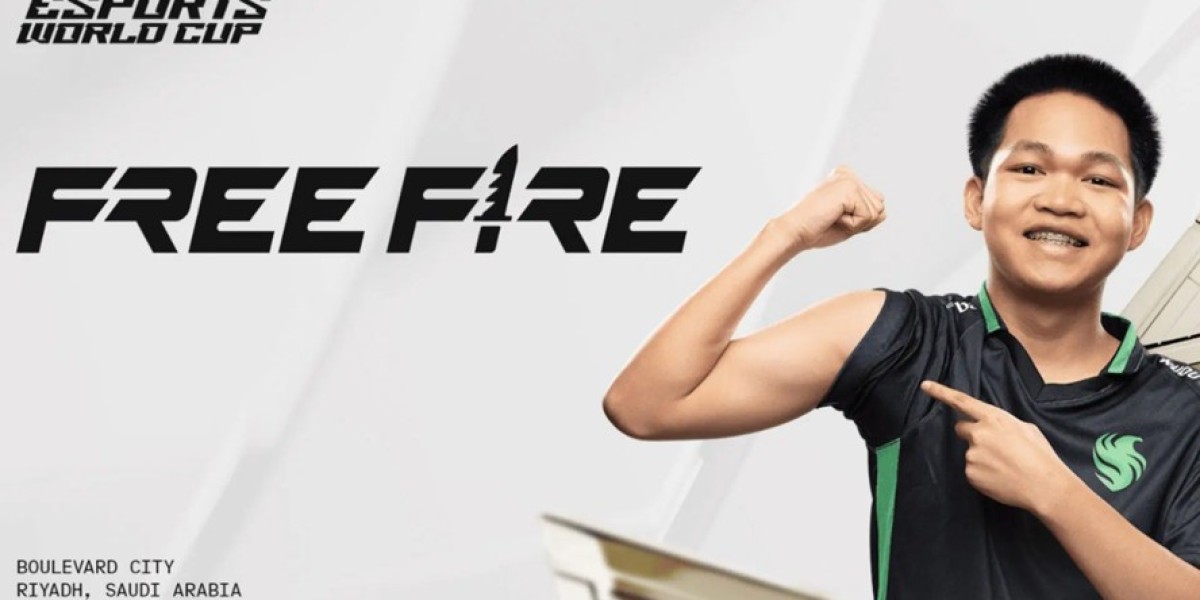Introduction
The Fast-Moving Consumer Goods (FMCG) sector is one of the most dynamic and competitive industries in the world. From packaged foods, beverages, and personal care items to household essentials, FMCG products are an inseparable part of our daily lives. Because these products are low in cost, high in volume, and frequently purchased, brands face a unique challenge: how to capture attention quickly and convert it into sales before competitors do.
In today’s digital-first environment, the traditional tools of marketing such as television ads, print media, and billboards—while still influential—are no longer enough to guarantee faster consumer reach. Audiences are now scattered across digital platforms, engaging with content that feels authentic and personalized. This is where influencer marketing comes into play.
Influencer marketing has emerged as a powerful strategy for FMCG brands looking to cut through the clutter and reach their target audiences with speed and impact. Unlike conventional advertisements that often feel distant or impersonal, influencer-led content resonates with consumers because it comes from a trusted voice—someone they follow, admire, and relate to.
In this blog, we will explore in detail why FMCG brands need influencer marketing for faster reach, how it aligns with the broader trend of Digital Marketing for FMCG, and what strategies brands can use to maximize its impact.
2. Understanding FMCG and the Challenge of Faster Reach
The Fast-Moving Consumer Goods (FMCG) industry includes products that are consumed quickly and purchased frequently—such as packaged foods, beverages, toiletries, cosmetics, and household cleaning products. These items are characterized by low margins, high sales volumes, and constant consumer demand. Because of these traits, FMCG companies must continuously compete for visibility, shelf space, and consumer mindshare.
2.1 The Nature of FMCG Products
Unlike luxury goods or high-end electronics, where purchase decisions are researched and deliberate, FMCG purchases are impulsive and habitual.
A consumer may pick up a soft drink or snack while shopping, without much thought.
Decisions are made in seconds, often influenced by brand familiarity, packaging, or recall from a recent advertisement or influencer post.
This means FMCG brands must work harder to ensure their products are always top of mind.
2.2 Consumer Behavior in the FMCG Space
Today’s consumer has a short attention span. Studies suggest that digital consumers often switch between multiple platforms and apps within minutes.
They seek authentic recommendations rather than being told what to buy through flashy ads.
Word-of-mouth, online reviews, and social media engagement strongly influence their decisions.
This shift in behavior makes traditional advertising less effective on its own, as consumers prefer content-driven, trust-based interactions.
2.3 Brand Clutter and Competition
The FMCG industry is one of the most crowded markets in the world. On a supermarket shelf, hundreds of brands fight for the consumer’s attention. Online, the competition is even fiercer, with countless ads appearing on every scroll.
Larger brands with huge budgets dominate prime spaces, while smaller brands often get overshadowed.
The consumer’s limited attention span means only brands with creative, relatable, and fast-reaching campaigns stand out.
2.4 The Need for Faster Reach
Speed is everything in FMCG marketing. New product launches, seasonal offerings, or promotional campaigns can quickly lose relevance if they don’t gain traction in time.
A beverage brand promoting a summer drink cannot afford to wait months for visibility; it needs immediate awareness and engagement.
Similarly, a personal care brand introducing a festive edition must reach its audience before the season ends.
This is why faster reach is a survival strategy for FMCG companies. And in the digital era, traditional methods alone cannot achieve this speed. Brands require modern, targeted approaches that cut through the clutter and directly connect with audiences in real time—this is where influencer marketing becomes crucial.
3. The Evolution of Digital Marketing for FMCG
Marketing has always been the backbone of the FMCG sector. For decades, television, print, and radio were the dominant channels to reach mass audiences. These mediums worked well because FMCG products are consumed by people of all ages, income groups, and geographies. However, with the rise of the digital economy, consumer attention has shifted dramatically. Today, Digital Marketing for FMCG has become a necessity rather than an option.
3.1 Traditional FMCG Marketing: A Look Back
Historically, FMCG brands relied heavily on broad-reach advertising campaigns:
Television commercials showcasing family-friendly narratives or catchy jingles.
Print ads in newspapers and magazines highlighting new product launches.
Outdoor billboards targeting high-footfall areas.
Radio jingles that created recall among commuters.
While these methods successfully built household names like Coca-Cola, Colgate, or Nestlé, they lacked one crucial element that today’s consumers demand—personalization and interactivity.
3.2 The Digital Shift in FMCG Marketing
With the rise of smartphones, social media, and e-commerce platforms, the FMCG industry saw a dramatic shift in marketing strategies. Consumers now spend a large part of their day online, scrolling through feeds, watching videos, and engaging with creators.
Digital-first FMCG brands such as D2C (Direct-to-Consumer) startups quickly gained traction using platforms like Instagram and YouTube.
Even established players started shifting ad budgets from TV to digital platforms to meet consumers where they spend most of their time.
This transformation gave FMCG marketers unprecedented access to data—from consumer demographics to purchasing behavior—allowing more targeted campaigns than ever before.
3.3 Social Media as the New Storefront
Social media platforms became the virtual shelves of FMCG products. Instead of competing for eye-level visibility in supermarkets, brands started competing for visibility on:
Instagram feeds and stories
YouTube unboxing videos and product reviews
TikTok challenges and reels showcasing quick recipes or hacks
Facebook groups discussing product recommendations
Here, content is interactive, fast, and shareable, making it ideal for FMCG campaigns that thrive on impulse and recall.
3.4 Why Influencer Marketing Fits into This Evolution
The digital shift also gave rise to influencers—ordinary individuals who built strong followings by sharing authentic content. Unlike celebrity endorsements of the past, influencers connect with audiences in a personal and relatable way.
For FMCG brands, this was a breakthrough:
Instead of relying solely on ads that consumers might skip, they could partner with influencers who naturally integrate products into everyday content.
Influencers could generate real conversations around a snack, beverage, or skincare product, making it more trustworthy than a polished TV ad.
Thus, influencer marketing has become a key pillar of Digital Marketing for FMCG, providing the speed, authenticity, and reach that modern campaigns demand.
4. What is Influencer Marketing?
Influencer marketing is a digital-first strategy that involves collaborating with individuals who have built strong credibility, trust, and influence over a specific audience. Unlike traditional celebrity endorsements where brands partner with famous actors or athletes, influencer marketing focuses on content creators, thought leaders, and niche community figures who are trusted by their followers for authentic recommendations.
For FMCG brands, influencer marketing is especially powerful because it blends advertising with authenticity. When an influencer integrates a product into their daily routine—whether it’s a favorite snack, skincare cream, or a new beverage—the recommendation feels genuine and relatable to their audience.
4.1 Defining the Role of an Influencer
An influencer is someone who:
Has the ability to impact purchasing decisions of others.
Builds authority and trust in a particular niche (beauty, food, lifestyle, fitness, parenting, etc.).
Engages directly with followers through social media content such as reels, stories, blogs, or YouTube videos.
In essence, influencers act as modern-day word-of-mouth marketers, but on a much larger scale.
4.2 Types of Influencers
Not all influencers are the same. They are categorized based on their follower count, niche, and impact. For FMCG brands, different tiers of influencers can serve different purposes:
Mega Influencers (1M+ followers)
Often celebrities or internet-famous personalities.
Best for mass awareness campaigns and national/global reach.
Macro Influencers (100K – 1M followers)
Popular social media figures or subject-matter experts.
Great for wider but still targeted campaigns.
Micro Influencers (10K – 100K followers)
Have smaller but highly engaged communities.
Ideal for authentic storytelling and product trials.
Nano Influencers (1K – 10K followers)
Everyday consumers with influence in their local or niche communities.
Excellent for grassroots-level FMCG marketing, especially in regional or rural markets.
This layered approach allows FMCG brands to combine large-scale visibility with trust-driven conversions.
4.3 Why Influencers are Trusted Voices in FMCG
The reason influencer marketing works so well for FMCG lies in trust and relatability.
Traditional ads are often seen as one-way communication, while influencer marketing feels like a personal recommendation.
Followers often view influencers as “people like them,” which makes endorsements feel genuine and achievable.
In the FMCG category, where purchases are frequent and relatively low-cost, even a small nudge from a trusted influencer can spark immediate sales.
For example:
A beauty blogger recommending a skincare cream can instantly influence thousands to try it.
A food vlogger showcasing a new instant noodle brand in a recipe can make it trend within days.
This fusion of authenticity, relatability, and speed makes influencer marketing one of the most effective strategies in the current era of Digital Marketing for FMCG.
5. Why Influencer Marketing is a Game Changer for FMCG Brands
The FMCG industry thrives on speed, scale, and consumer trust. Traditional advertising may create mass visibility, but it often struggles to deliver the authenticity and quick engagement modern consumers demand. Influencer marketing bridges this gap by combining credibility with reach—making it a true game changer for FMCG brands.
Below are the key reasons influencer marketing is transforming FMCG strategies:
5.1 Faster Brand Visibility
Influencers already have ready-made audiences who trust their recommendations. When an FMCG brand collaborates with an influencer:
The product gains instant exposure to thousands or even millions of followers.
Unlike traditional campaigns that take weeks or months to build traction, influencer content delivers immediate buzz through posts, reels, stories, or live sessions.
Example: When a food vlogger showcases a new snack, viewers often try it the very same day—this speed is unmatched by billboards or TV ads.
5.2 Authentic Word-of-Mouth at Scale
Word-of-mouth has always been the strongest marketing tool for FMCG products. Influencers simply digitize and amplify this process:
Instead of one person telling a few friends, an influencer tells thousands of followers.
The recommendation feels personal because followers often see influencers as peers.
For example, a mom influencer recommending a baby-care product resonates far more with parents than a generic TV ad.
5.3 Improved Trust and Credibility
Modern consumers are increasingly skeptical of traditional advertisements. Studies show that over 60% of people trust influencers more than brand ads because influencers share real experiences rather than scripted claims.
For FMCG brands, which often sell consumables like food or skincare, this trust factor is critical.
A simple testimonial such as “I use this face cream daily” feels more authentic than a polished commercial.
5.4 Cost-Effectiveness Compared to Traditional Advertising
Running a nationwide TV campaign can cost millions and still fail to connect with younger, digital-first audiences. Influencer marketing provides a cost-effective alternative:
Brands can work with nano or micro influencers at lower costs yet achieve high engagement.
Campaigns can be scaled up or down based on budget, product lifecycle, and regional focus.
This flexibility makes influencer marketing highly suitable for both global FMCG giants and emerging local players.
5.5 Humanizing the Brand
Consumers today want to connect with brands on a personal level. Influencers help humanize FMCG products by integrating them into daily-life content:
A lifestyle influencer sharing their morning routine with a coffee brand.
A beauty influencer showcasing a skincare product in their “night care ritual.”
A fitness influencer demonstrating a protein bar as part of their workout routine.
This storytelling approach transforms FMCG products from mere commodities into lifestyle essentials.
5.6 Faster Product Trials and Purchases
Because FMCG products are low-cost and low-risk, consumers are often willing to try them after just one trusted recommendation. Influencers accelerate this process by:
Offering discount codes, giveaways, or contests.
Creating “first impression” videos that encourage audiences to experience the product immediately.
This leads to faster product adoption and, if the product delivers, higher repeat purchases.
5.7 Competitive Advantage in a Crowded Market
With supermarket shelves and online stores flooded with endless options, influencer endorsements act as a shortcut to consumer attention.
A new beverage brand can stand out by becoming part of a trending TikTok or Instagram challenge.
A local snack company can dominate its region by working with regional influencers who know the local audience better than any national ad.
This helps brands differentiate themselves quickly in a highly competitive space.
6. The Psychology Behind Influencer Marketing in FMCG
Influencer marketing is not just about reach—it’s about human psychology. FMCG brands succeed with influencers because these partnerships tap into how people make decisions, build trust, and connect emotionally with products. Unlike rational, high-value purchases (like cars or electronics), FMCG products are often bought impulsively and repeatedly. This makes psychological triggers extremely important.
6.1 Trust in Peer Recommendations
Consumers naturally trust recommendations from people they know and relate to. Influencers act as digital peers—someone you “follow” daily, whose life you witness, and whose advice feels personal.
A beauty vlogger reviewing a face cream feels like a friend sharing her honest experience.
A food influencer trying a new snack feels like a recommendation during a casual conversation.
For FMCG, where products are inexpensive and easy to try, this trust factor often pushes consumers to make quick purchases.
6.2 Relatability Over Perfection
Traditional ads often showcase celebrities in idealized settings—a family enjoying a meal at a perfect dining table, or a model with flawless skin. While polished, these ads sometimes feel unrealistic.
Influencers, on the other hand, thrive on relatability:
A college student influencer casually sipping a new energy drink during exams.
A mom blogger sharing her baby’s favorite snack during a busy day.
This relatability tells consumers, “If it works for them, it can work for me too.”
6.3 Emotional Triggers in FMCG Decisions
Most FMCG purchases are not based on long analysis but on emotional cues like:
Taste & comfort (choosing a snack that reminds you of childhood).
Convenience (buying a ready-to-eat meal because a favorite influencer used it in a quick recipe).
Aspirations (using the same skincare brand as your favorite beauty influencer to feel closer to their lifestyle).
Influencers activate these emotional triggers by weaving products into their real-life stories, routines, and challenges.
6.4 Social Proof and Herd Mentality
Psychology shows that people often follow the crowd—a concept known as social proof. When consumers see multiple influencers endorsing the same FMCG brand, it signals that the product is popular and trustworthy.
Example: A new cold drink trending on Instagram reels because dozens of influencers are reviewing it.
Example: Multiple fitness creators promoting the same protein bar, making it the “must-try” product.
This herd effect accelerates sales and builds rapid brand recall.
6.5 The Power of Parasocial Relationships
Parasocial relationships are one-sided emotional bonds audiences form with influencers. Followers feel they know influencers personally even though the connection is virtual.
When an influencer says, “I’ve been loving this shampoo lately”, it feels like advice from a friend.
Followers internalize this trust and often act on recommendations without much hesitation.
For FMCG brands, which rely on repeated purchases, these parasocial relationships can drive long-term loyalty.
6.6 Scarcity and FOMO (Fear of Missing Out)
Influencers often use tactics like limited-time offers, giveaways, or seasonal promotions. Psychology proves that scarcity creates urgency.
“Only available for this summer!”
“I’m giving away 5 hampers of this snack brand, enter now!”
Such influencer-led messages create FOMO, encouraging consumers to act fast—perfect for FMCG products that thrive on impulse buying.
7. Benefits of Influencer Marketing for FMCG Brands
FMCG brands operate in a fast-paced, competitive, and cluttered market. To stay ahead, they need strategies that deliver speed, authenticity, and scale. Influencer marketing provides all three while aligning with consumer behavior in the digital age. Below are the key benefits FMCG brands enjoy when leveraging influencers:
7.1 Rapid Awareness and Faster Market Penetration
Influencers have ready audiences that trust their opinions.
FMCG brands can achieve instant visibility through sponsored posts, reels, or unboxings.
Unlike traditional ads that take time to build recall, influencer campaigns can go viral overnight, helping brands penetrate markets faster.
7.2 High Engagement and Interaction
Influencer content sparks likes, comments, shares, and saves—metrics that show active consumer interest.
FMCG products (snacks, drinks, cosmetics) often lend themselves to interactive formats like recipe videos, challenges, or tutorials.
This creates not just awareness but direct conversations around the product.
7.3 Boosting Product Trials and Repeat Purchases
FMCG purchases are low-cost and low-risk, making consumers more open to trying something new.
When influencers recommend a product, followers feel encouraged to test it out.
If the product delivers value, it results in repeat purchases and brand loyalty.
Example: A fitness influencer promoting a protein bar may drive thousands of trial purchases, which convert into ongoing consumption.
7.4 Expanding Reach Across Diverse Demographics
FMCG brands often serve broad, diverse audiences—from teens to parents, from urban metros to rural markets.
Influencer tiers (mega, macro, micro, nano) help brands target multiple demographics simultaneously.
Local and regional influencers allow FMCG brands to enter new geographies cost-effectively.
7.5 Strong Support for Product Launches
FMCG brands launch seasonal or limited-edition products frequently.
Influencers can create hype before launch, showcase first impressions on launch day, and sustain buzz afterward.
This launch-to-trial cycle happens much faster than with traditional campaigns.
7.6 Authentic Word-of-Mouth at Scale
FMCG thrives on word-of-mouth marketing.
Influencers amplify this by digitizing peer recommendations to thousands of followers at once.
Authentic content (like “My 5 favorite snacks”) feels far more genuine than scripted ads.
7.7 Cost-Effectiveness and Flexibility
Traditional FMCG advertising (TV, print, billboards) demands heavy budgets.
Influencer marketing allows budget flexibility—brands can partner with nano influencers for grassroots impact or mega influencers for nationwide reach.
Campaigns can be scaled up or down depending on the season, product, or budget.
7.8 Driving E-commerce and In-Store Sales
Influencers often provide discount codes, affiliate links, or swipe-up stories that lead directly to purchases.
FMCG brands listed on platforms like Amazon, Flipkart, BigBasket, or Blinkit can track sales spikes directly linked to influencer promotions.
Offline retailers also benefit, as influencer-driven hype often increases in-store demand.
7.9 Building Long-Term Consumer Relationships
FMCG products rely on brand loyalty for long-term growth.
Regular collaborations with influencers build consistent recall, keeping the brand top of mind.
Over time, this develops into a trusted relationship where consumers automatically reach for the brand on shelves.
7.10 Competitive Advantage in a Crowded Market
With hundreds of brands fighting for attention, influencer recommendations help cut through the clutter.
A trending influencer campaign can make a lesser-known brand outshine bigger competitors.
In industries where speed matters, this edge can make the difference between a product succeeding or disappearing.
8. Case Studies of FMCG Brands Using Influencer Marketing
The true power of influencer marketing for FMCG brands becomes clear when we look at real-world examples. Across the globe, major brands—and even emerging startups—have leveraged influencers to launch new products, build brand love, and accelerate consumer adoption.
8.1 Coca-Cola: Refreshing Reach Through Lifestyle Influencers
Coca-Cola has always been known for large-scale advertising campaigns, but in recent years, it has leaned heavily into influencer collaborations to target younger audiences.
In India, Coca-Cola partnered with regional content creators on Instagram and YouTube to promote its “Share a Coke” campaign.
- &








